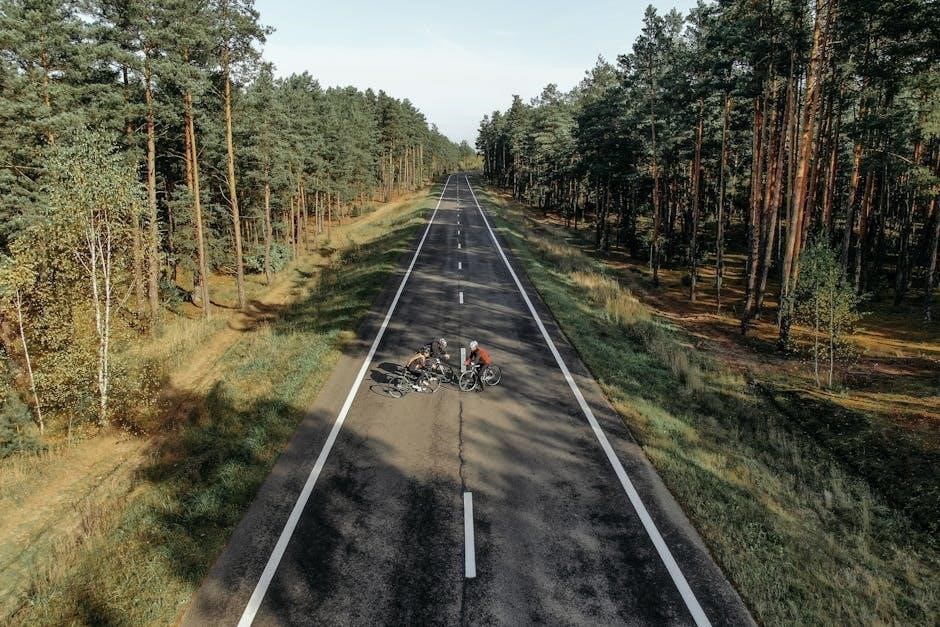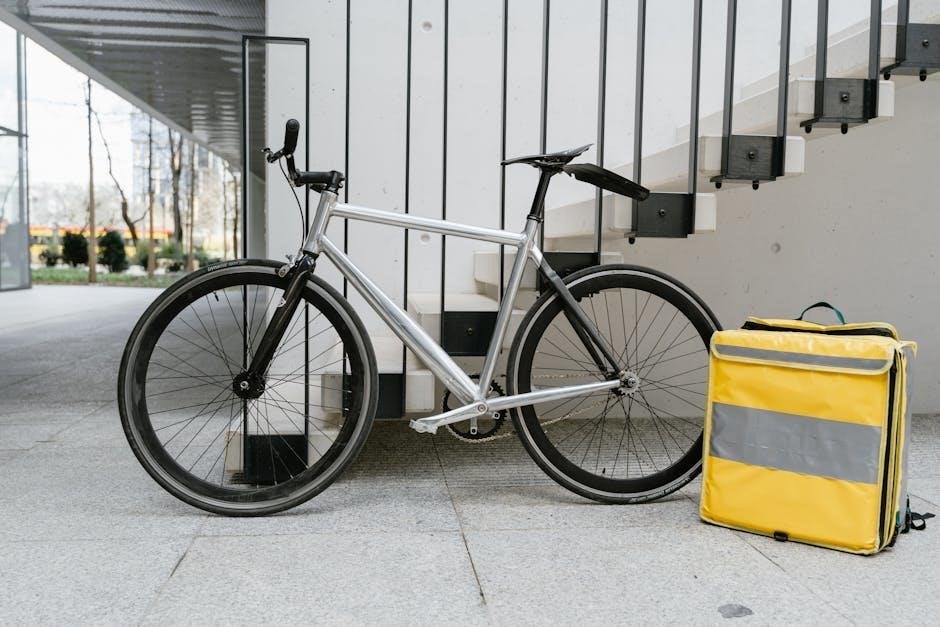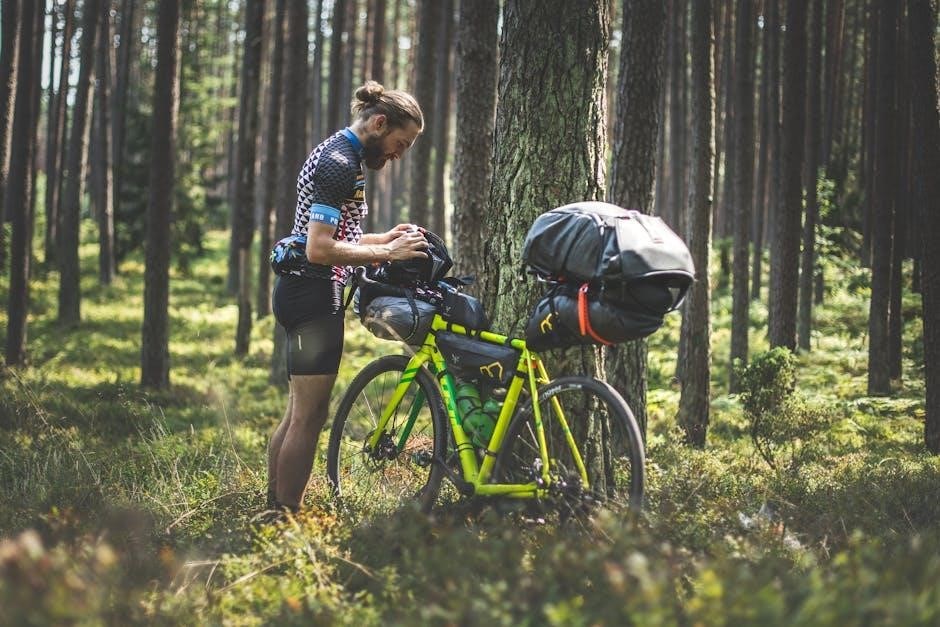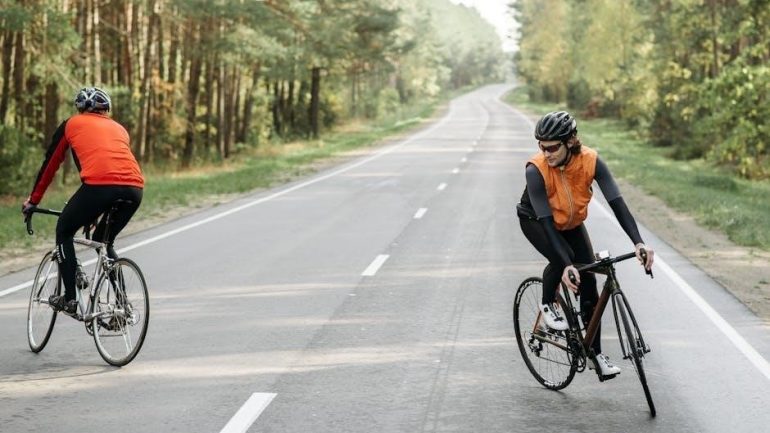What Are Self-Guided Cycling Trips?
Self-guided cycling trips are independent adventures where cyclists plan and execute their journeys without a tour group or guide․ These trips offer unparalleled flexibility‚ allowing riders to choose routes‚ set daily distances‚ and customize their experiences based on personal preferences․ Unlike guided tours‚ self-guided trips empower cyclists to explore at their own pace‚ whether meandering through scenic countryside or immersing themselves in local cultures․ They often involve pre-planned itineraries‚ with accommodations and logistics arranged in advance‚ but riders have the freedom to adjust schedules as they see fit․ This style of travel appeals to those who enjoy autonomy and the thrill of discovering hidden gems off the beaten path․ With the right preparation‚ self-guided cycling trips can be deeply rewarding‚ combining physical challenge with the joy of exploration․
Benefits of Self-Guided Cycling Trips
Self-guided cycling trips offer numerous benefits‚ including flexibility and autonomy‚ allowing cyclists to tailor their experiences to personal preferences․ Riders can set their own pace‚ choose routes‚ and decide when to stop‚ creating a more immersive and enjoyable journey․ These trips often cost less than guided tours‚ making them a budget-friendly option for adventure seekers․ Additionally‚ self-guided cycling fosters a deeper connection with nature and local cultures‚ as cyclists can engage more intimately with their surroundings․ The physical challenge of cycling also promotes mental and physical well-being‚ building endurance and confidence․ Finally‚ the sense of accomplishment from planning and executing a self-guided trip is incredibly rewarding‚ empowering cyclists to take ownership of their adventures․
Planning Your Route and Itinerary
Effective route planning ensures a smooth cycling experience‚ balancing scenic views with manageable distances‚ while a realistic itinerary allows for rest days and spontaneous exploration․
How to Choose the Best Destinations for Your Trip
Selecting the right destination for your self-guided cycling trip involves considering factors like terrain difficulty‚ scenic beauty‚ and personal interests․ For a challenging experience‚ mountainous regions such as the Alps or the Rockies offer breathtaking views and rigorous trails․ If you prefer a more relaxed ride‚ coastal areas or flat countryside routes‚ like those in Tuscany or the Netherlands‚ provide gentle landscapes and cultural attractions․ Weather is another crucial factor; choose seasons that align with your comfort level‚ avoiding extreme heat or cold․ Additionally‚ consider the availability of cycling infrastructure‚ such as bike paths and rental services‚ to ensure a hassle-free journey․ Lastly‚ think about local culture and cuisine to enrich your travel experience beyond the ride itself․
Mapping Your Route and Creating a Realistic Itinerary
Creating a detailed route and realistic itinerary is essential for a successful self-guided cycling trip․ Start by researching local cycling routes‚ using tools like GPS apps or online mapping platforms to design your path․ Consider the distance and terrain to ensure it matches your fitness level and preferences․ Break your trip into daily segments‚ allowing time for sightseeing and rest․ Begin with shorter rides and gradually increase the distance as you build endurance․ Include rest days to avoid burnout and to explore local attractions․ Check road conditions‚ weather forecasts‚ and accommodation availability along your route․ A well-planned itinerary ensures a balanced and enjoyable journey‚ allowing you to fully immerse yourself in the experience without feeling rushed or overwhelmed․

Preparing for Your Trip
Preparing for your self-guided cycling trip involves checking your bike’s condition‚ ensuring proper battery care‚ and charging it regularly to avoid full discharges and extend its lifespan․
Packing Essentials for a Self-Guided Cycling Trip
Packing for a self-guided cycling trip requires careful consideration to ensure comfort and safety․ Include lightweight‚ water-resistant clothing‚ a reliable bike lock‚ and a compact first-aid kit․ Don’t forget essential tools like Allen keys‚ a spare tire‚ and a puncture repair kit․ Navigation aids such as maps and a GPS device are crucial‚ along with a fully charged phone and a portable charger․ Hydration and nutrition are vital‚ so bring refillable water bottles‚ energy-rich snacks‚ and easy-to-carry meals․ Consider the weather by packing rain gear and layers for varying temperatures․ Personal items like sunscreen‚ a hat‚ and sunglasses protect you from the elements․ Properly organize your gear using bike racks or panniers for a balanced and efficient ride․
Physical Conditioning and Training for Long Rides

Building physical endurance is key for self-guided cycling trips‚ especially for long rides․ Start with shorter distances and gradually increase your mileage to improve cardiovascular fitness and muscle strength․ Incorporate interval training to boost speed and stamina․ Strengthening core muscles through exercises like planks and squats enhances stability on the bike․ Pay attention to proper posture to avoid strain․ Consider incorporating upper-body exercises to improve overall cycling efficiency‚ as popular in indoor cycling studios․ Regular rides help build endurance‚ while rest days allow muscles to recover․ Consistency is crucial to avoid fatigue and prevent injuries during extended trips․ Training should be tailored to the terrain and distance of your planned route to ensure readiness for the adventure ahead․

Executing Your Self-Guided Cycling Trip
Execute your trip with confidence by using navigation tools‚ staying safe‚ and managing logistics․ Plan accommodations‚ pack essentials‚ and stay prepared for varying weather conditions and terrain challenges․
Navigation Tools and Apps for Cyclists
Navigation tools and apps are essential for self-guided cycling trips‚ helping cyclists stay on route and explore confidently․ Popular options like Google Maps‚ Komoot‚ and Ride with GPS offer detailed maps‚ voice-guided directions‚ and customizable route planning․ These apps often include features like real-time traffic updates‚ points of interest‚ and weather forecasts․ Many allow offline access‚ crucial for areas with limited internet connectivity․ Cyclists can also share their routes with friends or family for safety․ Additionally‚ apps like Strava and CycleMap provide insights into popular cycling paths‚ elevation profiles‚ and user reviews․ By leveraging these tools‚ cyclists can focus on enjoying the scenery and the ride‚ knowing they have reliable guidance at their fingertips․ Properly using navigation apps enhances the overall experience‚ making self-guided cycling trips more enjoyable and stress-free․

Safety Tips for Solo or Group Cycling Adventures
Safety is paramount for both solo and group cycling adventures․ Always wear reflective clothing and ensure your bike has front and rear lights to increase visibility․ Carry a basic toolkit‚ spare tire‚ and pump to handle minor repairs․ When riding solo‚ share your route with a friend or family member and check in regularly․ Stay hydrated and carry snacks‚ especially on long rides․ Be mindful of weather conditions‚ reducing speed in wet or slippery surfaces․ For group rides‚ maintain formation and communicate hazards to others․ Avoid distractions like using headphones and stay alert to traffic․ Keep a first-aid kit handy and know basic first aid․ Familiarize yourself with local cycling laws and always follow traffic rules․ By prioritizing safety‚ cyclists can enjoy their self-guided trips with confidence and peace of mind‚ ensuring a memorable and incident-free adventure․
Accommodation and Logistics During the Trip
Organizing accommodation and logistics is crucial for a smooth self-guided cycling trip․ Research local options like hotels‚ hostels‚ or bike-friendly B&Bs‚ ensuring they offer secure bike storage․ Booking in advance‚ especially during peak seasons‚ guarantees availability․ Consider the proximity of accommodations to your route to minimize detours․ Plan meals by packing snacks and locating restaurants along your path․ For logistics‚ use apps to navigate‚ track your route‚ and monitor weather conditions․ Carry a portable charger to keep devices powered․ Arrange transportation for luggage if needed‚ allowing you to travel lightly․ Lastly‚ leave a detailed itinerary with a trusted contact to ensure safety․ Proper planning ensures a hassle-free experience‚ letting you focus on enjoying the ride and the scenic views‚ creating lasting memories of your adventure․




